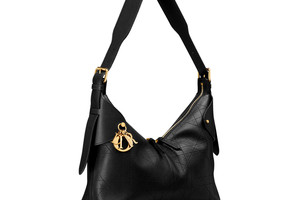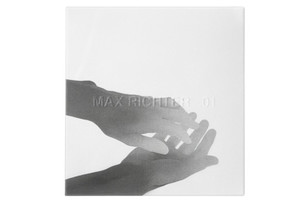Kristina Jansson, Paintings for People in Trouble
Written by Sandra MyhrbergWhere does the image end, and where does painting’s ability to tell what the image cannot begin? This question has always been central to Kristina Jansson’s practice. Her exhibition Paintings for People in Trouble, her fourth solo show at Andréhn-Schiptjenko, is as much a reflection on contemporary society as it is an invitation for the viewer to engage with this inquiry. Without offering definitive answers, Jansson’s paintings—laden with references and charged imagery—guide the viewer into a space where the (im)possibility of dialogue, the fleeting nature of existence, and unstable environments invite a deeply personal reading of our times.
When did you first realize that art would play a significant role in your life?
Slowly. Growing up in the countryside on a farm, art was not part of the daily life. I would say it was a slow parallel insight that I needed to find spaces and places for a dimension in me that I couldn’t find where I was. After finishing a degree in chemistry, I lived to the States for a year. Coming back to Sweden I moved to Stockholm and started to find a path towards art educations and forming a new identity.
You’ve lived and studied abroad. How have these experiences shaped you personally and artistically?
At the time when I first left for the US for a year there was no digital infrastructure what so ever, it really gave me a sense of autonomy and freedom. This has stayed with me when living, studying and working with art in other countries. When I got accepted to the academy in Vienna everything was really old school analogue and I had no-one there to help or guide in anything. Strangely enough it really gave me a sort of mandate to pursue and work with the things I really was interested in, I had no-one to answer to, I was the strange Swedish girl, so the Austrian heritage didn’t become me either. I think that experience was important, to feel self sufficient and independent is good for the work and the artistic development, especially during that period of life. I think it really inspired me to take whatever opportunity I got to try and repeat that, so I also worked in Rotterdam for a period, studied at École des Beaux-Arts in Paris and later on worked there for a year on a French scholarship.
Where does your exploration of the boundary between image and painting begin? How do you define what painting can express that the image cannot?
I was very early aware of the discrepancy between the photo and the reality even though I had no words to define it. Susan Sontag has written about it, so has (Jaques)Lacan and (Roland)Barthes,in his way. We live today in a world almost violently reflected through technical images, some more obviously fictive than others. I believe it's very hard to understand to what extent this twarts our perception of the world, ourselves and who we are. It sound really big but making paintings is for me a way of processing the state of the world the way it sort of hits me, through a kind of ”bastard” image that is not smooth and “swipeable”. Something that creates friction and another challenge to the viewer.
To answer your question, I do believe that the painting offers a completely different kind of visual relationship with the viewer.
Your paintings often contain loaded references. How do you choose these motifs, and what role do they play in guiding the viewer’s interpretation?
I always try to make paintings that ”functions/works” in their own right, but their origins are the engine for me to make them at all. I could never make something for the plain esthetics of it, they are to tough to produce, I have to be really attached to their subject matter to manage that process.I am interested in the basic human drives, vices and desires, how they materialize. Working for all these years I see that I constantly try to process different aspects of them in imagery, ofter with popular references in combination with different painterly strategies. I have learned to trust this weird selection system that has guided the choices of what and how to work. Sometimes I feel like the servant of the painting, that it is the work that dictates for how to ”perform them”. It's only in retrospective that I can really see that the works has a lot to do with the state of the world and myself, my feeling of being hostage in a very cynical and dangerous time is something very present. For the viewer I never hide their origin but I do think that a piece also have the right to autonomy. I trust that they will do their job in one way or the other without me constantly explaining or talking about them from my perspective.
Paintings for People in Trouble is described as a reflection on contemporary society. What specific aspects of today’s world influenced this body of work?
This particular body of work consists of paintings with environmental subject matters, On human struggles with courage, cowardice and art. Very broad but I see it perhaps as they touch upon the clash between the human world and the “real” world. We make a very big deal of ourselves instead of looking at ourselves as a spices among other spices. To me a lot of what happens in the world are repercussions on our unwillingness to rethink our place and mandate in the world as such.
How has your role as a professor of painting at the Royal Institute of Art influenced your own practice? Do you find teaching inspires new perspectives in your work?
To me the teaching part is a constantly evolving practice. The students I meet are young and more unexperienced than me but they sort of inhabit something that is unattainable for me, their particular ”zeitgeist” if you will. I find this extremely interesting and I feel a sort of responsibility to share whatever knowledge I have to facilitate their journey. There is a really weird concept that ”fronesis”, or practical wordless knowledge, is not transmittable. I can see very clearly that it absolutely is and that it also for me is very soothing to see that the young artists will do their thing and continue the ”field”. I cannot say if this environment influences or gives new perspectives, but it does give hope, and that’s not so bad.
How do you feel about viewers interpreting your work in ways you might not have intended?
I have absolutely no problems with that. It would be super weird to think that I would dictate other peoples heads. An artwork always hits individually though that persons totality of experiences and feelings, that the very force of it. Thats also a reason why you can live with them over time, the works changes when you do.
How do you balance traditional techniques with contemporary themes in your work?
I don’t believe in tradition, not in the defining sense. I use a material in its different potentials of language and, some ways of applying color could be connected to different eras or artistic directions, but to me I’m interested in the transgression between the visual and the visceral. If I can make the friction of the material to halt the gaze and make it follow the seduction of the painting I’m happy.
In your opinion, what is the role of painting in addressing or reflecting societal challenges today?
I mean, I would like to use Luc Tuymans statement that ”I paint because I’m not naive”, but fact remains that painting has this extreme capacity of adaption, it lends itself to the time and the hand that handles it. If anything, a painting can be a sort of hub for very complex thoughts and feelings compressed into one visual expression. Something that would be very complicated and long to put in words.
Kristina Jansson / Andréhn-Schiptjenko
Paintings for People in Trouble
On view 14 november – 21 december, 2024















